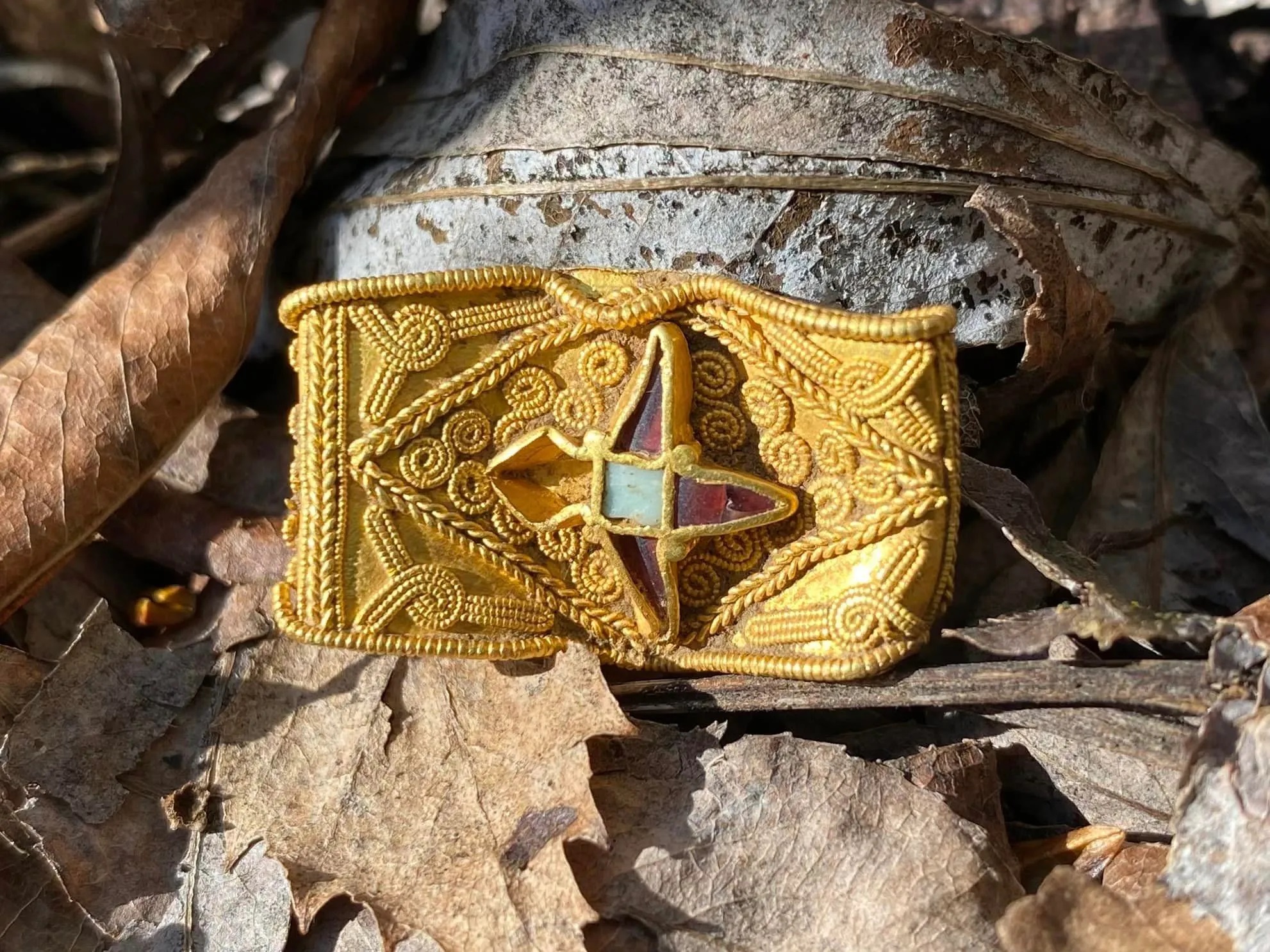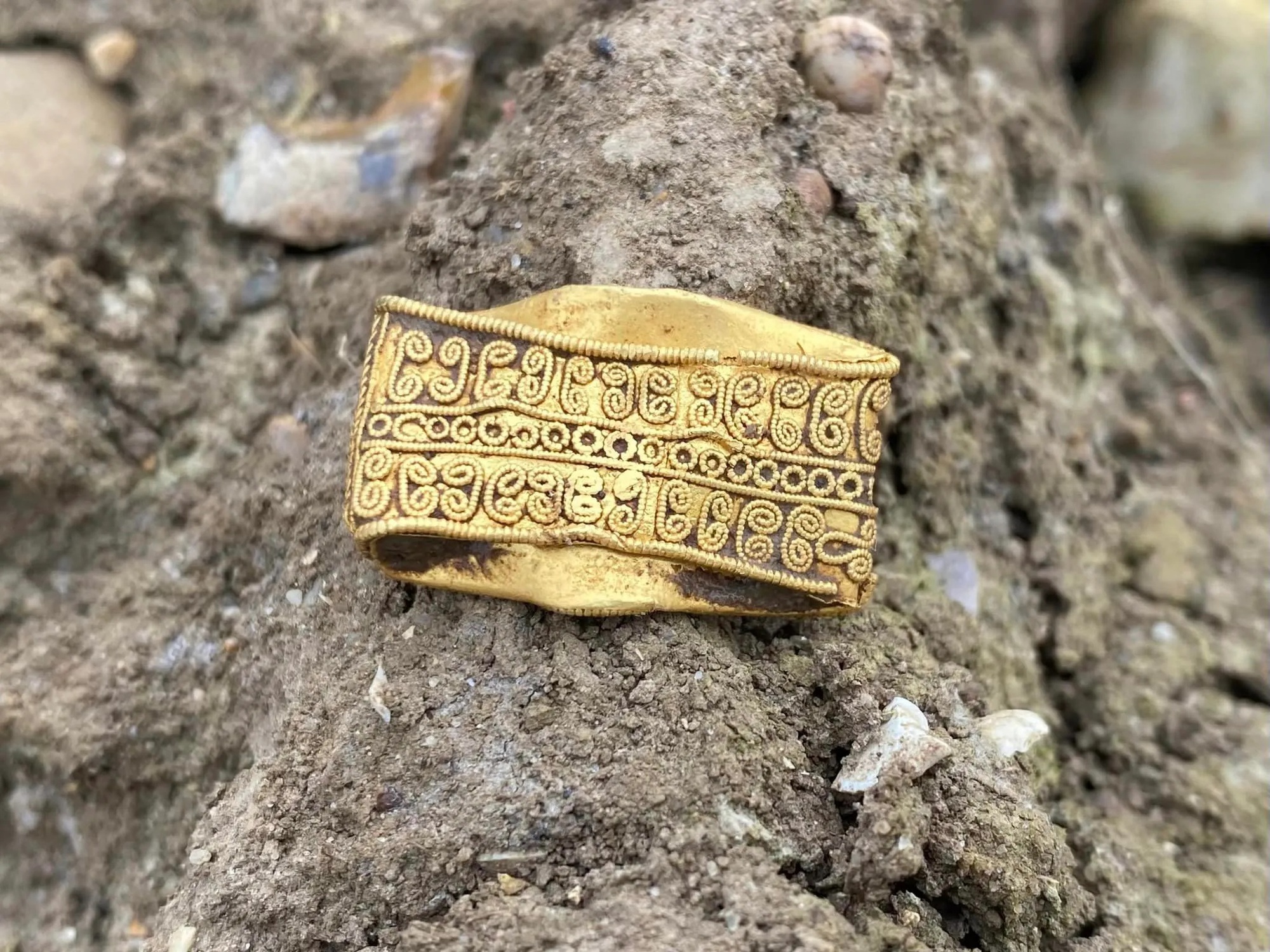Dean Young was about to put away his metal detector after a day of searching when the alarm suddenly went off. He dug down about 15cm and was amazed to find a gold ring.
The 47-year-old from Wickford, Essex, told The Sun: “I thought it was a piece of gold foil, I picked it up and thought ‘it’s heavy’.
I saw the detail on it and was really amazed, I couldn’t believe it, I knew straight away it was something special. I showed it to my friend and my friend shouted ‘what did you do!'”.


Dean, a six-year novice, unearthed a “unique” 1,400-year-old solid gold Saxon ring. The flat ring is 20mm thick, 35mm wide and weighs 7g.
It is set with red garnets forming a four-pointed star around a “mysterious” white gem that Dean said has baffled experts.
An intricate rope motif is also decorated around the ring, which is believed to date back to 650 AD.

It is not yet clear who dropped the ring in the West Essex field but experts say it is likely to have belonged to someone of high status.
Dean, who owns an antiques and recycling shop, added that he followed procedure, handing the ring to the local Objects Liaison Officer, who forwarded it to the British Museum.
The father of two revealed that experts believe the treasure could fetch up to £40,000 (VND1.3 billion) at auction and he will not accept a lower price.

Professor Michael Lewis, Head of Portable Antiquities and Treasures at the British Museum, told The Sun: “This stunning ring highlights the skill of Anglo-Saxon craftsmen.”
Treasure has many definitions but the main requirements are that it must be up to 200 years old and more than 10 percent of its weight must be precious metals.
If there is a reward for a discovery, the money is usually split equally between the finder and the landowner.
Under the Treasure Act 1996, finders are legally obliged to report all finds that are likely to be Treasure to the local police coroner in the county where the treasure is found.




